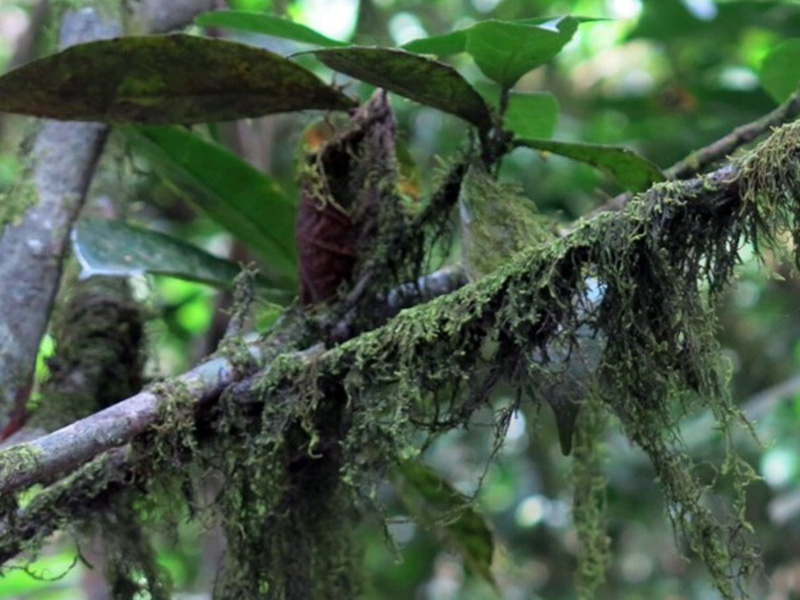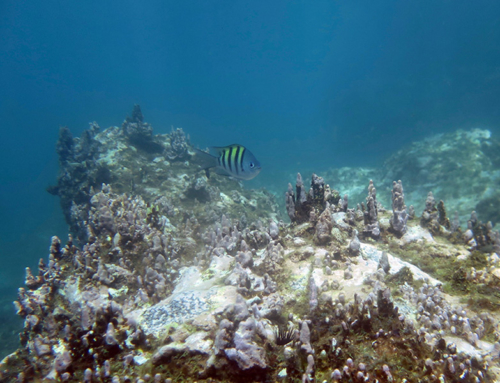Context: After its discovery in 1471 by Portuguese sailors, São Tomé & Príncipe became an important Portuguese agricultural colony, focusing initially on sugar cane and later coffee and predominantly cocoa. Since 1970 most plantations were abandoned. This means that the vast majority of both islands is covered with secondary forests full of introduced plants species (297 taxa). The only primary vegetation remains where climatic and relief conditions are too harsh for profitable agriculture, which for Príncipe is in the southern highest part. The part of relatively undisturbed forest on Príncipe where endemic insects and plants can sustain a safe population density level is only 25 km2. This is a tiny area that can be destroyed easily in a period of a few years if not effectively protected.
The highest points of Príncipe are basaltic peaks up on the southern part of the islands plateau, Pico do Príncipe (948m), Carriote (839m), Pico Mencorne (680m) as well as Pico Agulhas, Pico Papagaio (680m) and even Pico Mesa (537m). The high humidity in these mountain and cloud-mist forests favors bryophytes, orchids, lianas and ferns and create bryophyte draped environments with overall less tree diversity. In terms of fauna, these forests are important for reptiles, amphibians and a high diversity of insects, many still undescribed. Cloud forests are only small habitat pockets and are considered storehouses rich in biodiversity and endemics that might differ from one peak to the next as they can be considered little islands in itself. Moreover they are providers of abundant freshwater, indispensable for the vegetation and the villages downstream. Trail access is very limited into these quality forests, so they remain poorly explored. With every expedition new species are being discovered, which emphasizes the need for continued field work to unravel the secrets of these forests in the clouds. More systematic field inventory sampling at the higher altitudes of in Príncipe would be a relevant undertaking to update the distribution and range of Principe insects and plants with a high likelihood of discovering new species.
Aim: Unravel the botanic and entomological diversity of Principe’s cloud forests, as well as their main ecosystem services.
Methods: Organise an expedition team with lower plant, orchid and insect specialists to spend twice per year 2-3 weeks in the peak regions. Collection of plant and insect specimens. Identification of specimens, new species descriptions and publications. Ecosystem services assessment.
Expected output:
- Updated species list of flora and insect groups for the cloud forest
- Description of possible new species
- Description of the cloud forest ecosystem functions
Collaboration:
- Parque Natural do Príncipe
- Botanist Tom Daniel (CAS), Bryophyta experts Jim Shevock (CAS), Cesar Garcia (U. Lisboa)
- Butterfly expert Luis Mendes, orchid expert Tariq Stevart (ULB, MBG)
Identify other entomologists, including through California Academy of Sciences



